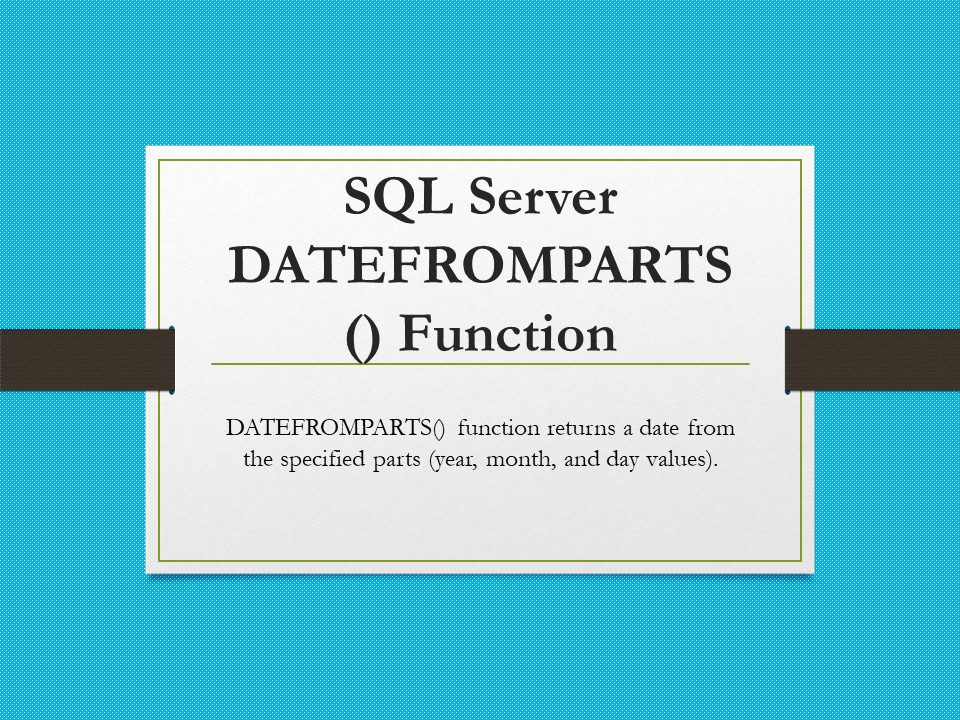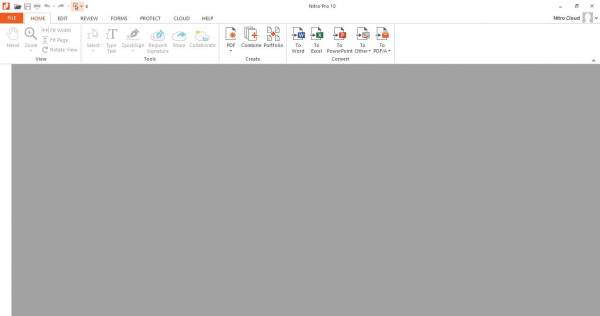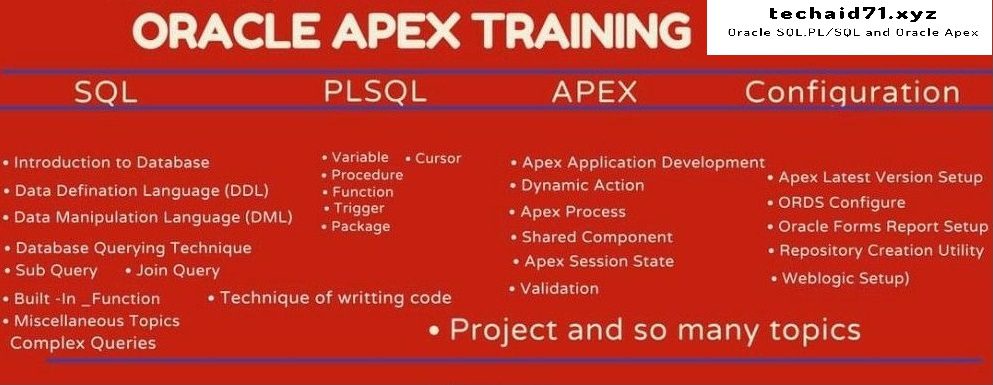SQL Server Function
Deterministic and Nondeterministic Functions:
Deterministic functions always return the same result any time they are called with a specific set of input values and given the same state of the database.
Examples: Sum(), AVG(), Square(), Power() and Count()
Note: All aggregate functions are deterministic functions.
Nondeterministic functions may return different results each time they are called with a specific set of input values even if the database state that they access remains the same.
Examples: GetDate() and CURRENT_TIMESTAMP
Rand() function is a Non-deterministic function, but if you provide the seed value, the function becomes deterministic, as the same value gets returned for the same seed value.
We will be using tblEmployees table, for the rest of our examples. Please, create the table using this script.
CREATE TABLE [dbo].[tblEmployees]
(
[Id] [int] Primary Key,
[Name] [nvarchar](50) NULL,
[DateOfBirth] [datetime] NULL,
[Gender] [nvarchar](10) NULL,
[DepartmentId] [int] NULL
)
Insert rows into the table using the insert script below.
Insert into tblEmployees values(1,’Sam’,’1980-12-30 00:00:00.000′,’Male’,1)
Insert into tblEmployees values(2,’Pam’,’1982-09-01 12:02:36.260′,’Female’,2)
Insert into tblEmployees values(3,’John’,’1985-08-22 12:03:30.370′,’Male’,1)
Insert into tblEmployees values(4,’Sara’,’1979-11-29 12:59:30.670′,’Female’,3)
Insert into tblEmployees values(5,’Todd’,’1978-11-29 12:59:30.670′,’Male’,1)
Encrypting a function definiton using WITH ENCRYPTION OPTION:
We have learnt how to encrypt Stored procedure text using WITH ENCRYPTION OPTION in Part 18 of this video series. Along the same lines, you can also encrypt a function text. Once, encrypted, you cannot view the text of the function, using sp_helptext system stored procedure. If you try to, you will get a message stating ‘The text for object is encrypted.’ There are ways to decrypt, which is beyond the scope of this video.
Scalar Function without encryption option:
Create Function fn_GetEmployeeNameById(@Id int)
Returns nvarchar(20)
as
Begin
Return (Select Name from tblEmployees Where Id = @Id)
End
To view text of the function:
sp_helptex fn_GetEmployeeNameById
Now, let’s alter the function to use WITH ENCRYPTION OPTION
Alter Function fn_GetEmployeeNameById(@Id int)
Returns nvarchar(20)
With Encryption
as
Begin
Return (Select Name from tblEmployees Where Id = @Id)
End
Now try to retrieve, the text of the function, using sp_helptex fn_GetEmployeeNameById. You will get a message stating ‘The text for object ‘fn_GetEmployeeNameById’ is encrypted.’
Creating a function WITH SCHEMABINDING option:
1. The function fn_GetEmployeeNameById(), is dependent on tblEmployees table.
2. Delete the table tblEmployees from the database.
Drop Table tblEmployees
3. Now, execute the function fn_GetEmployeeNameById(), you will get an error stating ‘Invalid object name tblEmployees’. So, we are able to delete the table, while the function is still refrencing it.
4. Now, recreate the table and insert data, using the scripts provided.
5. Next, Alter the function fn_GetEmployeeNameById(), to use WITH SCHEMABINDING option.
Alter Function fn_GetEmployeeNameById(@Id int)
Returns nvarchar(20)
With SchemaBinding
as
Begin
Return (Select Name from dbo.tblEmployees Where Id = @Id)
End
Note: You have to use the 2 part object name i.e, dbo.tblEmployees, to use WITH SCHEMABINDING option. dbo is the schema name or owner name, tblEmployees is the table name.
6. Now, try to drop the table using – Drop Table tblEmployees. You will get a message stating, ‘Cannot DROP TABLE tblEmployees because it is being referenced by object fn_GetEmployeeNameById.’
So, Schemabinding, specifies that the function is bound to the database objects that it references. When SCHEMABINDING is specified, the base objects cannot be modified in any way that would affect the function definition. The function definition itself must first be modified or dropped to remove dependencies on the object that is to be modified.
🔹 Deterministic vs. Non-deterministic Functions
| Type | Description | Examples |
|---|---|---|
| Deterministic | Returns the same result every time for the same input and database state | SUM(), AVG(), POWER(), COUNT(), SQUARE() |
| Non-deterministic | May return different results even with the same input and database state | GETDATE(), CURRENT_TIMESTAMP, RAND() without seed |
🔹 Sample Table Setup
|
1 2 3 4 5 6 7 8 9 10 11 12 13 14 15 16 17 18 |
CREATE TABLE [dbo].[tblEmployees] ( [Id] [int] PRIMARY KEY, , [DateOfBirth] [datetime], , [DepartmentId] [int] ); INSERT INTO tblEmployees VALUES (1,'Sam','1980-12-30','Male',1), (2,'Pam','1982-09-01 12:02:36.260','Female',2), (3,'John','1985-08-22 12:03:30.370','Male',1), (4,'Sara','1979-11-29 12:59:30.670','Female',3), (5,'Todd','1978-11-29 12:59:30.670','Male',1); |
🔹 Scalar Function Examples
✅ Without Encryption
|
1 2 3 4 5 6 7 8 9 |
CREATE FUNCTION fn_GetEmployeeNameById(@Id INT) RETURNS NVARCHAR(20) AS BEGIN RETURN (SELECT Name FROM tblEmployees WHERE Id = @Id); END |
📌 To view function text:
|
1 2 3 4 |
sp_helptext fn_GetEmployeeNameById |
🔒 With Encryption
|
1 2 3 4 5 6 7 8 9 10 |
ALTER FUNCTION fn_GetEmployeeNameById(@Id INT) RETURNS NVARCHAR(20) WITH ENCRYPTION AS BEGIN RETURN (SELECT Name FROM tblEmployees WHERE Id = @Id); END |
📌 Now sp_helptext fn_GetEmployeeNameById will show:
“The text for object ‘fn_GetEmployeeNameById’ is encrypted.”
🔹 WITH SCHEMABINDING Option
Prevents deletion/modification of referenced objects without altering/dropping the function first.
✳ Alter Function with SCHEMABINDING
|
1 2 3 4 5 6 7 8 9 10 |
ALTER FUNCTION fn_GetEmployeeNameById(@Id INT) RETURNS NVARCHAR(20) WITH SCHEMABINDING AS BEGIN RETURN (SELECT Name FROM dbo.tblEmployees WHERE Id = @Id); END |
✅ Note:
Must use 2-part name (e.g., dbo.tblEmployees)
Now, trying to drop tblEmployees will result in:
“Cannot DROP TABLE ‘tblEmployees’ because it is being referenced…”
✅ Summary Points:.
- Deterministic = Same result each time, Non-deterministic = Varies.
WITH ENCRYPTIONhides the function code.WITH SCHEMABINDINGbinds the function to its dependencies (tables/views).- Use schema-qualified names (
dbo.) when usingSCHEMABINDING.

If you’d like me to proceed with any of these, please just let me know from the site techtweet.xyz! Also if you need to learn something new than subscribe YouTube : ASP.NET With SQL SERVER







